Choosing the right contractor is a critical decision that can greatly impact the success and safety of any project. Whether it’s a construction project, a renovation, or any other undertaking, selecting a contractor who meets your requirements and prioritizes health and safety is paramount. With numerous factors to consider, it’s essential to clearly understand what to look for when evaluating potential contractors.
This blog will explore the 16 key factors to consider when choosing a contractor. From assessing their health and safety policies to evaluating the competence of their personnel, we will delve into the aspects that ensure a contractor’s reliability, capability, and commitment to maintaining a safe working environment. By examining these factors, you can make an informed decision and engage a contractor who meets your project’s needs but also prioritizes the well-being of everyone involved.

What are Contractors?
Contractors are individuals or companies hired to perform specific client tasks or services. They are professionals who specialize in various fields and offer their expertise to complete projects or assignments on behalf of the client. Contractors may work in various industries, including construction, engineering, information technology, consulting, etc.
Contractors are typically hired temporarily and are distinct from regular employees. They often work independently or as part of a team, depending on the nature of the project. Contractors may be responsible for providing their own equipment, tools, and resources to complete the assigned tasks.
The scope of work for contractors can vary significantly, from small-scale assignments to large construction projects. They may be responsible for project planning, execution, and management, depending on their area of specialization. Contractors are typically paid a negotiated fee or rate for their services, which can be based on project milestones, time, or deliverables.
One of the advantages of hiring contractors is the flexibility they offer. Clients can engage contractors for specific projects without the long-term commitment and overhead costs associated with permanent employees. Contractors bring specialized skills, experience, and resources to the table, allowing clients to access expertise on a project-by-project basis. However, it’s important to note that contractors may have legal and financial obligations, such as maintaining their business licenses and insurance and complying with relevant regulations. Clients should establish clear contractual agreements and expectations when engaging contractors to ensure a mutually beneficial working relationship.
Factors to Consider When Choosing Contractors
Selecting the right contractor for a project is crucial for its success. Whether a construction project, renovation, or any other undertaking, the contractor is vital in delivering quality work and ensuring a safe working environment. To make an informed decision when choosing a contractor, consider the following 16 factors:
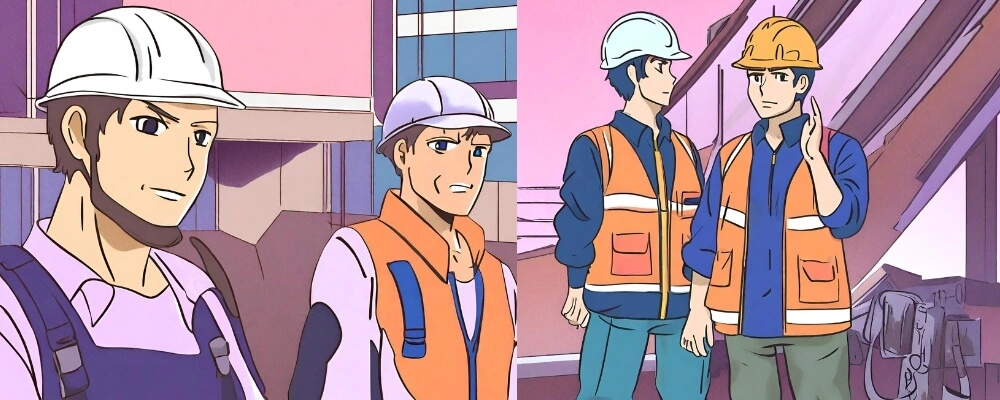
1. Health and Safety Policy
A contractor’s health and safety policy is a crucial factor to consider when choosing contractors. It is a comprehensive document outlining the contractor’s approach and commitment to maintaining a safe and healthy work environment. A well-documented policy demonstrates that the contractor prioritizes the well-being of their workers and others involved in the project. It should cover various aspects such as risk assessment procedures, hazard control measures, emergency response protocols, training requirements, and the responsibilities of both management and employees in upholding health and safety standards.
By evaluating the contractor’s health and safety policy, clients can assess their dedication to preventing accidents, promoting safe work practices, and complying with relevant regulations and standards.
2. Competence of Personnel
When evaluating the competence of personnel, it is essential to ensure that the contractor can demonstrate that the individuals assigned to the project possess the required expertise, skills, knowledge, and experience to carry out the work in a safe and effective manner. This includes verifying that the personnel has the necessary qualifications and certifications relevant to the job, as well as assessing their track record and experience in similar projects.
Competent personnel should understand industry best practices, safety regulations, and any specific project requirements. By assessing the competence of the contractor’s personnel, clients can have confidence that the work will be performed by skilled professionals who are capable of managing potential risks and ensuring a high standard of quality and safety throughout the project.

3. Accident Monitoring
Accident monitoring is a critical aspect of contractor selection as it reflects the contractor’s commitment to maintaining a safe working environment. The contractor should have established systems in place to effectively monitor and track accidents and incidents that occur at their worksites. This includes recording and analyzing the frequency, severity, and types of accidents and incidents that have happened during previous projects.
By diligently monitoring these incidents, the contractor can assess their safety performance, identify trends, and pinpoint areas for improvement. This information enables them to implement proactive measures to prevent similar incidents from occurring in the future, enhance safety training and procedures, and continuously enhance their safety management systems. A contractor with robust accident monitoring systems demonstrates their dedication to learning from past experiences and prioritizing the well-being of their workers and others involved in the project.
4. Trade Association Memberships
Trade association memberships are another important factor to consider when choosing contractors. Membership in reputable trade associations within their industry indicates that the contractor is committed to professional standards, ethics, and best practices. These associations often have strict membership criteria and require contractors to adhere to a code of conduct, including high levels of competence, safety, and quality in their work.
Being a trade association member demonstrates that the contractor is engaged in continuous professional development, staying updated on industry trends, regulations, and advancements. It also provides access to resources, networking opportunities, and a dispute resolution platform. Considering a contractor’s trade association memberships can help assess their credibility, professionalism, and commitment to delivering high-quality work.
5. Experience With Similar Works
Experience with similar works is a crucial factor to consider when selecting a contractor. It refers to the contractor’s past experience in successfully completing projects similar in nature, scope, and complexity to the one at hand. Contractors with relevant experience are more likely to understand the specific requirements, challenges, and best practices associated with the work being undertaken. They are familiar with the nuances, technicalities, and potential pitfalls of the project, which can contribute to smoother execution and better results.
Experience brings knowledge of effective approaches, methodologies, and solutions tested and proven in similar projects. It also instills confidence that the contractor has the necessary skills, expertise, and resources to tackle the specific tasks and deliver satisfactory outcomes. When evaluating a contractor’s experience, it is important to consider the size, scale, and complexity of previous projects to ensure they align with the current project’s requirements.
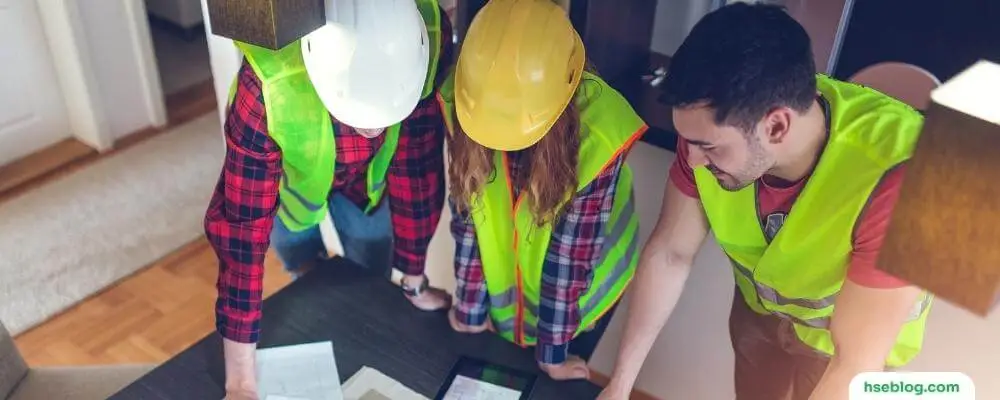
6. Hazard Assessment and Control Measures
Hazard assessment and control measures are integral to ensuring a safe working environment. The contractor should demonstrate a systematic approach to identifying and assessing the hazards of the specific job or project. This involves conducting thorough hazard assessments, considering the nature of the work, the site conditions, and the potential risks involved.
Based on the assessment, the contractor should develop and implement appropriate control measures to mitigate the identified hazards effectively. These control measures may include engineering controls, administrative controls, and personal protective equipment (PPE) requirements.
The contractor should prioritize hazard prevention and implement measures that align with industry best practices and regulatory standards. By demonstrating a systematic approach to hazard assessment and control measures, the contractor shows their commitment to ensuring the safety of workers and stakeholders and minimizing the potential risks associated with the project.
7. Method Statement
The method statement is a crucial document that outlines the specific approach and procedures the contractor will follow to complete the project safely. It should provide a detailed and comprehensive plan that addresses all significant risks associated with the project. The method statement should describe the step-by-step sequence of activities, highlighting the safety precautions, control measures, and procedures that will be implemented to mitigate risks effectively.
The statement should cover various aspects, such as site preparation, handling of materials and equipment, work procedures, coordination with other trades, and emergency response protocols. It should identify potential hazards and outline specific control measures that will be implemented to eliminate or minimize those hazards.
A well-prepared method statement demonstrates the contractor’s commitment to safety and proactive risk management. It provides a clear roadmap for the execution of the project while ensuring that safety considerations are integrated into every stage of the work. Clients can evaluate the method statement to ensure that the contractor has a comprehensive plan in place to protect the well-being of workers, reduce the likelihood of accidents or incidents, and achieve the desired project outcomes in a safe manner.
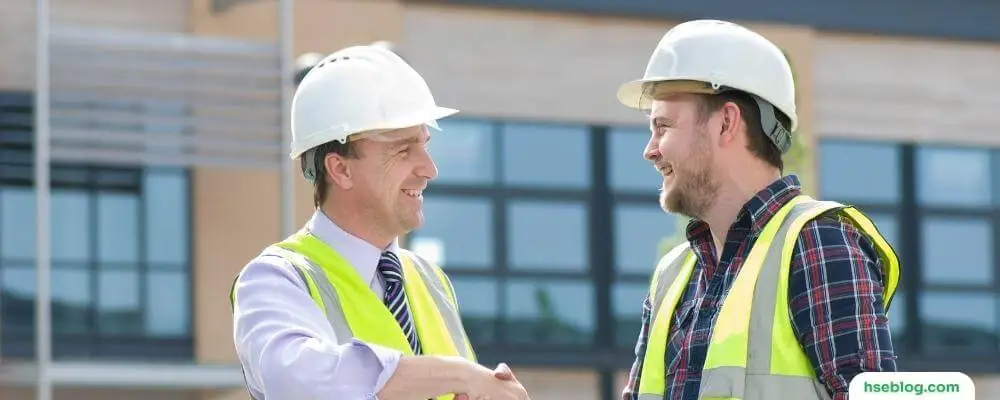
8. Health and Safety Arrangements
The contractor’s health and safety arrangements refer to the established guidelines and procedures governing the project site’s health and safety management. These arrangements should be clear, well-documented, and effectively communicated to all workers. They include safety protocols, reporting mechanisms for hazards and incidents, emergency response procedures, personal protective equipment (PPE) use, and adherence to relevant regulations and standards.
By having robust health and safety arrangements in place, the contractor demonstrates their commitment to maintaining a safe working environment and ensures that all workers know and follow the necessary measures to prevent accidents, injuries, and health risks.
9. Effective Monitoring
Effective monitoring is an essential component of contractor selection, as it involves implementing systems and processes to consistently review and evaluate the implementation of health and safety measures. The contractor should have monitoring arrangements to assess their safety protocol adherence, identify deviations or non-compliance, and promptly address them. This monitoring may include regular inspections, audits, incident investigations, and performance reviews to ensure compliance with ongoing health and safety standards.
By having effective monitoring arrangements, the contractor can proactively identify areas that require improvement, take corrective actions, and continuously enhance their safety performance, ultimately ensuring a safer working environment for all involved in the project.

10. Qualified and Skilled Staff
The qualification and skill level of the contractor’s staff is a crucial factor to consider when selecting a contractor. The contractor should ensure that they employ workers who have received proper training and possess the necessary skills and qualifications required for their assigned tasks. This includes verifying the employees’ training certificates, assessing their experience level, and ensuring they hold relevant licenses or certifications.
By employing qualified and skilled staff, the contractor demonstrates their commitment to executing the project with competence and expertise. It also ensures that the workers are equipped to perform their tasks safely and effectively, reducing the likelihood of accidents or errors that could compromise the quality of work or pose risks to the health and safety of individuals on the project site.
11. References and Performance
Checking references and evaluating a contractor’s past performance is crucial in contractor selection. It involves contacting and verifying the contractor’s references and conducting independent research to gather feedback and reviews from previous clients. Positive references and evidence of satisfactory performance on similar projects indicate the contractor’s reliability, professionalism, and ability to deliver quality work.
By assessing their past performance, clients can gain insights into the contractor’s track record, adherence to project timelines, ability to manage resources effectively, and commitment to meeting client expectations. This information helps make an informed decision, ensuring that the chosen contractor has a proven history of successful project delivery and is likely to effectively meet the client’s requirements.
12. Availability of Safety Advice
The availability of safety advice is crucial for a contractor to effectively address health and safety matters during a project. The contractor should have access to competent safety advice through an in-house safety professional or by engaging external consultants with expertise in occupational health and safety. These advisors provide guidance and recommendations on various safety aspects, such as risk assessments, hazard identification, control measures, and compliance with relevant regulations and standards.
They can help the contractor develop and implement effective safety protocols, offer insights on emerging safety trends and best practices, and assist in resolving any safety-related challenges. By ensuring the availability of competent safety advice, clients can have greater confidence that the contractor is well-equipped to manage health and safety effectively throughout the project, minimizing risks and promoting a safe working environment.
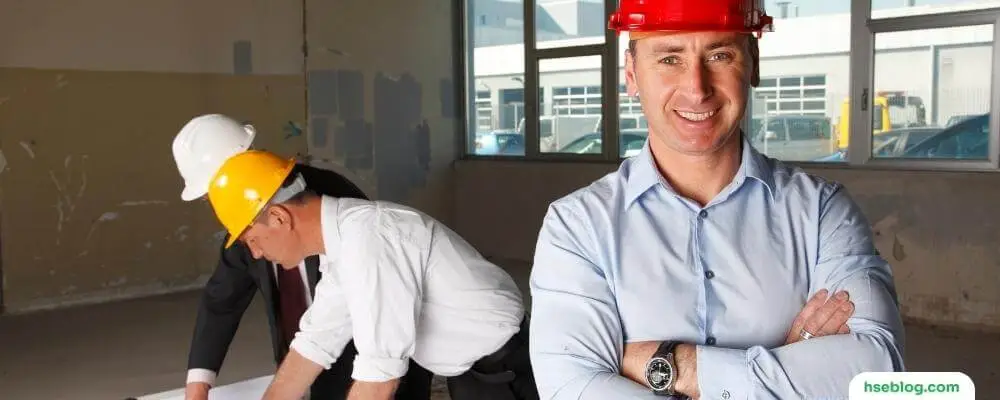
Legal Considerations to Keep In Mind
The HSW Act applies to all work activities. It requires employers to ensure, so far as is reasonably practicable, the health and safety of:
- Their employees;
- Other people at work on their site, including contractors;
- Members of the public who may be affected by their work.
All parties to a contract have specific responsibilities under health and safety law, and these cannot be passed on to someone else:
- Employers are responsible for protecting people from harm caused by work activities. This includes the responsibility not to harm contractors and subcontractors on site.
- Employees and contractors must not endanger themselves, their colleagues, or others affected by their work.
- Contractors must also comply with the HSW Act and other health and safety legislation. When contractors are engaged, the activities of different employers do interact. So cooperation and communication are needed to ensure all parties can meet their obligations.
- Employees must cooperate with their employer on health and safety matters and not do anything that puts them or others at risk.
- Employees must be trained and clearly instructed in their duties.
- Self-employed people must not put themselves in danger or others who may be affected by what they do.
- Suppliers of chemicals, machinery, and equipment must ensure their products or imports are safe and provide information.
The Management of Health and Safety at Work Regulations apply to everyone at work and encourage employers to take a more systematic approach to dealing with health and safety by:
- Assessing the risks which affect employees and anyone who might be affected by the site occupier’s work, including contractors;
- Setting up emergency procedures;
- Providing training; cooperating with others on health and safety matters, for example, contractors who share the site with an occupier;
- Providing temporary workers, such as contractors, with health and safety information.
The principles of cooperation, coordination, and communication between organizations underpin the Management of Health and Safety at Work and CDM Regulations. See Section 3.12 on a joint occupation of premises for more information on the Management of Health and Safety at Work Regulations.
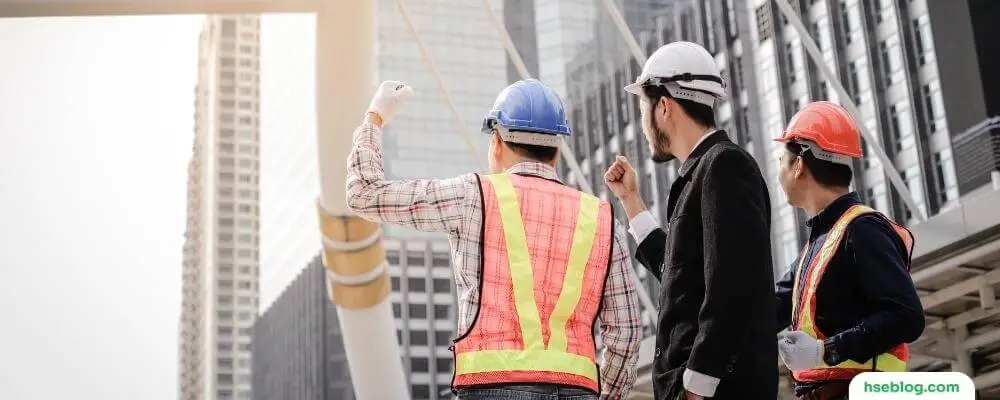
Construction Design And Management (CDM2007) Regulations
Businesses often engage contractors for construction projects at one time or another to build a plant, convert or extend premises, and demolish buildings. The CDM 2007 Regulations apply to all construction projects. Larger projects that are notifiable have more extensive requirements.
All projects require the following:
- Non-domestic clients to check the competence of all their appointees; ensure there are suitable management arrangements for the project; allow sufficient time and resources for all stages; provide pre-construction information to designers and contractors;
- Designers to eliminate hazards and reduce risks during design and provide information about remaining risks;
- Contractors to plan, manage, and monitor their work and that of employees; check the competence of all their appointees and employees; train their employees; provide information to their employees; comply with the requirements for health and safety on-site detailed in Part 4 of the Regulations and other Regulations such as the Work at Height Regulations, and ensure there are adequate welfare facilities for their employees;
- Everyone to ensure their competence; cooperate with others and coordinate work to ensure the health and safety of construction workers and others who may be affected by the job; report obvious risks; take account of the general principles of prevention in planning or carrying out construction work, and comply with the requirements in Schedule 3, Part 4 of CDM 2007 and other Regulations for any work under their control.
For even small projects, clients should ensure that contractors provide the following:
- Information regarding the contractor’s health and safety policy;
- Information on the contractor’s health and safety organization detailing the responsibilities of individuals;
- Information on the contractor’s procedures and standards of safe working;
- The method statements for the project in hand;
- Details on how the contractor will audit and implement its health and safety procedure;
- Do they have procedures for investigating incidents and learning lessons from them?
Smaller contractors may need some guidance to help them produce suitable method statements. While they do not need to be lengthy, they should set out those features essential to safe working, for example, access arrangements, PPE, control of chemical risks, etc.
Copies of relevant risk assessments for the undertaken should be requested. These need not be very detailed but should indicate the risk and the control methods to be used.
The client, designer, CDM coordinator, principal contractor, and others have specific roles under CDM 2007 Regulations.
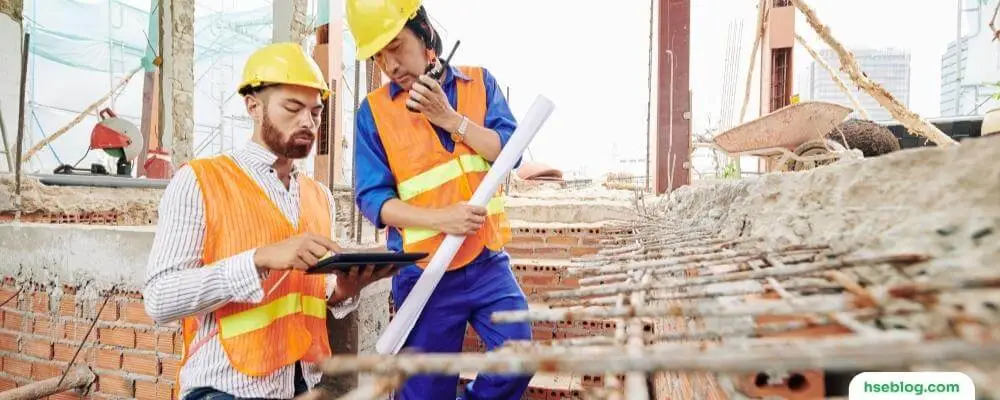
Contractor Authorization
Contractors, their employees, sub-contractors, and their employees should not be allowed to commence work on any client’s site without authorization signed by the company contact. The authorization should define the range of work that the contractor can carry out and set down any special requirements, for example, protective clothing, fire exits to be left clear, and isolation arrangements.
Permits will be required for operations such as hot work. All contractors should keep a copy of their authorization at work. A second copy of the authorization should be kept at the site and be available for inspection.
The company contact signing the authorization will be responsible for all aspects of the contractor’s work. The contact will need to check, as a minimum, the following:
- That the correct contractor for the work has been selected; that the contractor has made appropriate arrangements for the supervision of staff;
- That the contractor has received and signed for a copy of the contractor’s safety rules;
- That the contractor is clear about what is required, the limits of the work, and any special precautions that need to be taken;
- The contractor’s personnel are properly qualified for the work to be undertaken.
The company contact should check whether subcontractors will be used. They will also require authorization if deemed acceptable. The company contact will be responsible for ensuring that sub-contractors are properly supervised.
Appropriate supervision will depend on several factors, including the risk associated with the job, the experience of the contractor, and the amount of supervision the contractor will provide. The person signing the contractor’s authorization is responsible for ensuring proper supervision. The company contact will be responsible for ensuring adequate and clear communication between different contractors and company personnel where this is appropriate.
Conclusion
Selecting the right contractor is a critical aspect of any project, especially when it comes to ensuring the health and safety of everyone involved. While cost is a factor, it should not be the sole determining factor. Instead, a balanced judgment considering various factors is essential. The factors to consider when choosing contractors encompass several aspects, including their health and safety policies, the competence of personnel, availability of safety advice, accident monitoring, hazard assessment and control measures, method statements, health and safety arrangements, monitoring arrangements, qualified and skilled staff, and references indicating satisfactory performance.
Additionally, trade association memberships, maintenance of equipment, experience with similar works, staff training, and control of sub-contractors should also be considered. Furthermore, legal considerations, such as the Health and Safety at Work Act, CDM regulations, and contractor authorization, add another layer of importance to the selection process.
By thoroughly evaluating these factors, clients can make informed decisions prioritizing health, safety, and overall project success. Choosing the right contractor not only minimizes risks but also ensures the smooth execution of the project, resulting in high-quality work and satisfied stakeholders.

